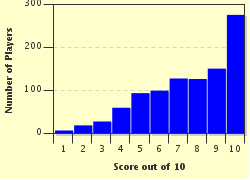Quiz Answer Key and Fun Facts
1. All Azerbaijani notes include a map of the country on the reverse side. In which geographic region will you find Azerbaijan?
2. The obverse of all denominations of qәpik, like the reverse of all manat notes, includes a map of Azerbaijan which shows the country as having two segments. The smaller area is the Nakhchivan Autonomous Republic, which is completely separated from the rest of Azerbaijan by Armenia. What is the term used to describe a part of a country which is completely surrounded by the territory of one or more other countries?
3. The obverse of the 20 manat note features symbols of power, while the reverse features a symbol of peace. The official theme for this bill is Karabakh, referring to the disputed region of Nagorno-Karabakh. With which of its neighbours has Azerbaijan disputed control of this region?
4. The theme for the 100 manat note is economy and development. What is represented by the symbol that resembles an arch with a vertical column?
5. The theme of the 5 manat note is writing and literature, as you can tell from the books pictured. The front of the bill includes some of the lyrics of the national anthem of Azerbaijan. What is the first line, in English, of "March of Azerbaijan"?
6. As well as displaying the medieval script of Azerbaijan, the reverse of the 5 manat note replicates one of the features for which the area of Gobustan is famous. What is found in Gobustan, causing it to have been made a UNESCO World Heritage Site?
7. The obverse of the 10 manat note features a stylized representation of some of Azerbaijan's most historic structures - the Maiden Tower, the Palace of the Shirvanshahs, and the Icheri Sheher wall. In the old walled section of what city, which happens to be the capital of Azerbaijan, will you find these edifices?
8. What would you do if you were visiting an Azerbaijani friend who handed you a daf, a kamancheh or a tar?
9. Azerbaijan is renowned for producing which textile product, a design for which is featured on the reverse side of the 50 manat note?
10. The theme of the 20 qәpik coin is similar to that of the 50 manat note. Can you decide which aspect of Azerbaijani culture is the inspiration for the motifs used?
Source: Author
looney_tunes
This quiz was reviewed by FunTrivia editor
stedman before going online.
Any errors found in FunTrivia content are routinely corrected through our feedback system.

